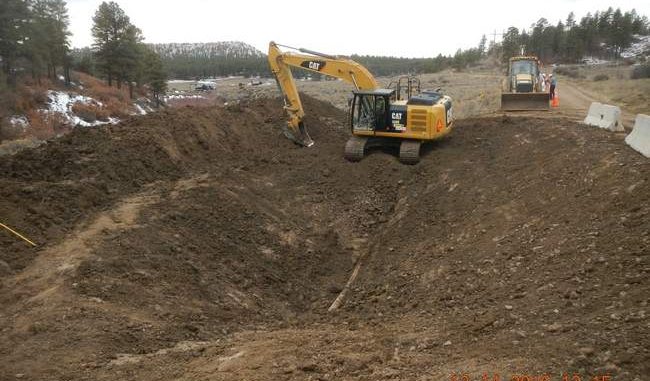
A BP pipeline running along Sauls Creek in Bayfield, Colorado ruptured last week for “unknown” reasons, spilling similarly unknown quantities of methane-contaminated wastewater into a tributary of the Los Pinos river.
After the spill was discovered on December 13th, BP crews immediately closed the line, shut down 17 wells and constructed a temporary earthen dam to contain the produced water from spilling further downstream.

BYPASS THE CENSORS
Sign up to get unfiltered news delivered straight to your inbox.
You can unsubscribe any time. By subscribing you agree to our Terms of Use
Latest Video
However as of Monday British Petroleum could still not say how long the spill had been occurring nor how much was released and the cause of the spill still remains unknown.
Natural Blaze reports:
British Petroleum (BP), the company behind the devastating “Deepwater Horizon” oil spill in the Gulf of Mexico, has – once again – been found responsible for a spill in Colorado. Though BP is better known for its petroleum products, the spill released still unknown amounts of coal-bed methane wastewater into a tributary of the Los Pinos river, known as Sauls Creek. The rupture was discovered on December 13th,, but not made public until more recently. State reports said that a 6-inch fiberglass gathering line was found leaking early that morning on a Forest Service Road, though BP representatives have insisted that it was discovered just two hours after the rupture took place.
The discovery of the leak led to the immediate emergency construction of an earthen dam in order to prevent the toxic wastewater from traveling farther downstream. BP crews also shut down 17 nearby gas fracking wells they own in addition to shutting off the ruptured pipeline. An early estimate, cited by the Durango Herald, showed that the contaminated water had traveled at least 2,300 feet along the tributary bed.
BP has remained incredibly tight-lipped about the damage done by refusing to say how long the spill had been occurring, how much methane wastewater was released into the environment, and what the exact contents of the wastewater were. They also refused to even speculate on what could have caused the spill. Even though BP is clearly trying to keep information about this spill out of the public eye, enough evidence is available to speculate on the damage done. For example, a follow-up report released on December 15th showed that hydro-evacuation trucks had removed a total of 150 barrels – or 6,300 gallons of standing water that was a mix of the pipeline’s contents and snowmelt.
In addition, a recent sample of water from Sauls Creek, taken just days after the spill, contained 4,000 milligrams/liter of total dissolved solids, a massive increase from background levels of less than 300 mg/L. However, the chemical makeup of the wastewater released remains unknown, making it difficult to gauge the true damage of the incident.
Brett Clanton, a BP representative, told the Durango Herald that “with safety as our highest priority, we will continue to coordinate with relevant agencies to complete any further remediation efforts as warranted.” Despite such promises of cooperation, Todd Hartman of the Colorado Oil and Gas Conservation Commission suggested that BP will face “some kind of enforcement action due to impact on waters of the state.”


